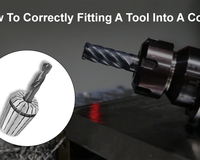What are depth gauges?
A depth gauge is used to gauge the hole depth on a feature, groove, drilled hole, workpiece edge or any other required depth measurement. A common application would be to gauge whether a hole is drilled to the correct required depth.
How do you use depth gauges?
Standard depth gauge have a wide base which allows the gauge to rest on a surface whilst the reading took place. The scale would then be pushed (via a thumb roller or by hand) down to the base of the hole where the scale would be read. Depending on the type of depth gauge, this scale would be read manually (Vernier or dial) or on a digital readout.
What different types of depth gauge are there?
For the most part, depth gauge conform to a uniform layout; wide base with a long scale which descends into a hole until it reaches the floor. As stated, readouts are available in Vernier, dial or digital variants. Dial and Vernier gauges are also supplied with different graduations depending on the level of accuracy required.
Various types of depth gauge are available to cover different applications. Vernier hook depth gauges feature a hook for measuring between a component face and the underside of grooves. Miniature depth gauges are perfect for precision small hole depth measurements. Certain thread gauge ranges also feature interchangeable bases, with extension bases available for situations where a wider base is required. Similarly, extension rods increase the depth gauge in which a gauge can measure.
What is the difference between a depth gauge and a depth micrometer?
A depth micrometer is used to measure depth whereas depth gauge just check or ‘gauge’ depth. Depth micrometers are used predominantly in inspection settings as they are much more accurate than depth gauges.
What features do depth gauges have?
Depending on the type of depth gauge, different features are present. Most depth gauge are made of a stainless steel substrate for protection in general workshop conditions.
Accuracy can also vary greatly based on the model. On dial depth gauges or Vernier depth gauges, graduation indicates the increment by which the scale increases, which could be either 0.1mm or 0.01mm. Naturally, dial indicators with a 0.01mm graduation will be more accurate than ones with 0.1mm. Digital indicators, by virtue of its numerical readout, provide more accurate measurements than dial indicators and eliminates any human error encountered by manually reading the scale.
Can you calibrate depth gauges?
In theory, it is possible to calibrate depth gauge. However, for most practical workshop uses calibration should not be required.





